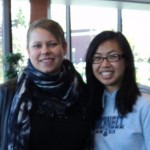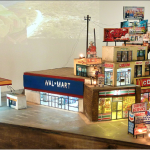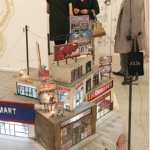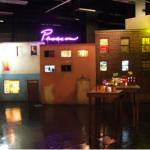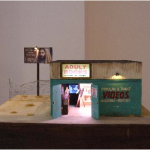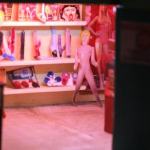Written by Christina Huang in Sculpture 3
For my arts-related profession interview, I was fortunate enough to meet with professional artist, Tracey Snelling during her short visit at Bucknell. I do not have a word-for-word recording of the interview, so I will summarize her answers.
Question: Where did you go to school and what did you study? What was your educational experience like?
Answer: Tracey Snelling studied at the University of New Mexico, Albuquerque. She decided to take some time off to work odd jobs and travel along the west coast before returning to the University of New Mexico to finish her BFA in Photography in 1996. She enjoyed her junior and senior college years the most because she had the opportunity to take more independent study classes to develop her own work outside of classroom assignments.
Question: What did you do after graduation? How did you get to where you are today?
Answer: After graduation, Snelling worked in a few art-related jobs such as teaching as a substitute art teacher and mixing colors in a color lab. During this time, she submitted her work to some art shows through galleries (galleries were more likely to accept walk-in portfolios unlike nowadays). Eventually some of her work was accepted and it was at these open-call art shows that Snelling’s work eventually became recognized. Her persistence is one of the reasons that has led her to her success.
Question: What is an average day like for you?
Answer: Snelling’s average day depends on her work timeline. On a regular day, she wakes up, goes for a run or goes to the gym, grabs some lunch and goes to the studio. When deadlines are closer, more time is dedicated to the studio.
Question: What do you enjoy most about your job? What do you find most challenging about it?
Answer: Snelling enjoys having more freedom. She likes being able to decide what to create and
how to create it. As you can see, even though she studied photography as an undergraduate student, her present works are more focused in video and sculpture. Snelling has used her freedom to explore different medias that interest her. She even enjoys freedom in simple ways such as working under her own schedule and waking up when she wants to, for example. Sometimes, all this freedom can also pose as a challenge because it requires self-motivation and time management skills to maintain. Another challenge about her job is that it is not a stable living condition. Snelling went overcame many obstacles to get to where she is today. Now, Snelling has art exhibitions lined up, so once work for one deadline is finished, she is on to the next one!
Question: What skills are most essential in your job?
Answer: Having good photography and documentation skills are important skills for an artist.
Question: What advice do you have for young, aspiring student artists?
Answer: Snelling thinks that it is really important to be open to criticism from people that you respect. Art is so subjective and everyone has different opinions, so it is important for the artist to remember what his/her personal interests are and to not forget his/her personal motivations for making art. Also, Snelling advises that students “get used to rejection” and follows up by saying “even if someone gives you a ‘no’, it doesn’t mean that there isn’t room for your work to grow.”
Interesting facts: Tracey Snelling’s work can now be viewed in the Downtown Gallery until August 2012. Snelling will also be participating in a group show at a museum in Oslo, Norway later this year.
See Tracey Snelling’s work on her official website: www.traceysnelling.com
Tracey Snelling is open questions from professors and students via email.
